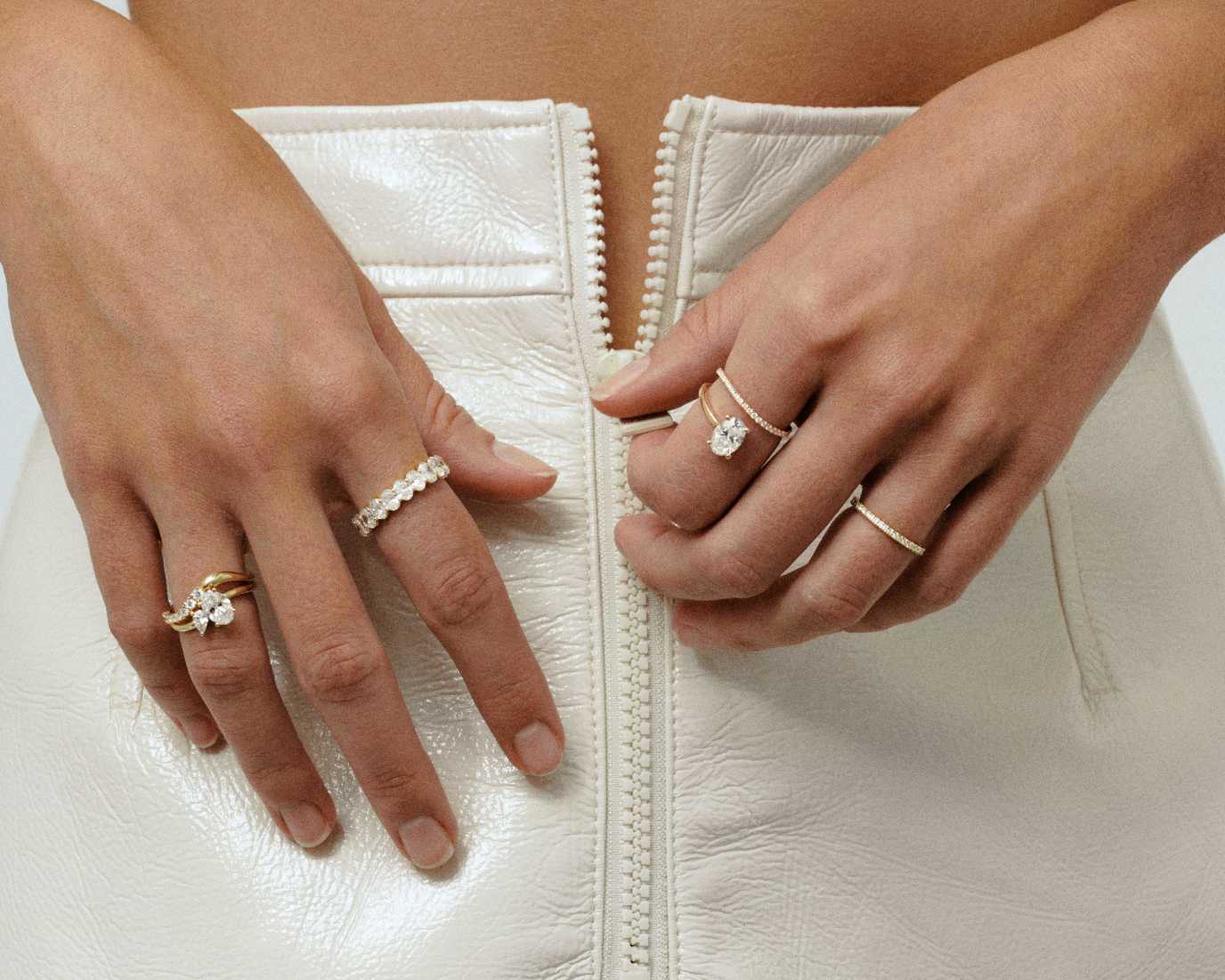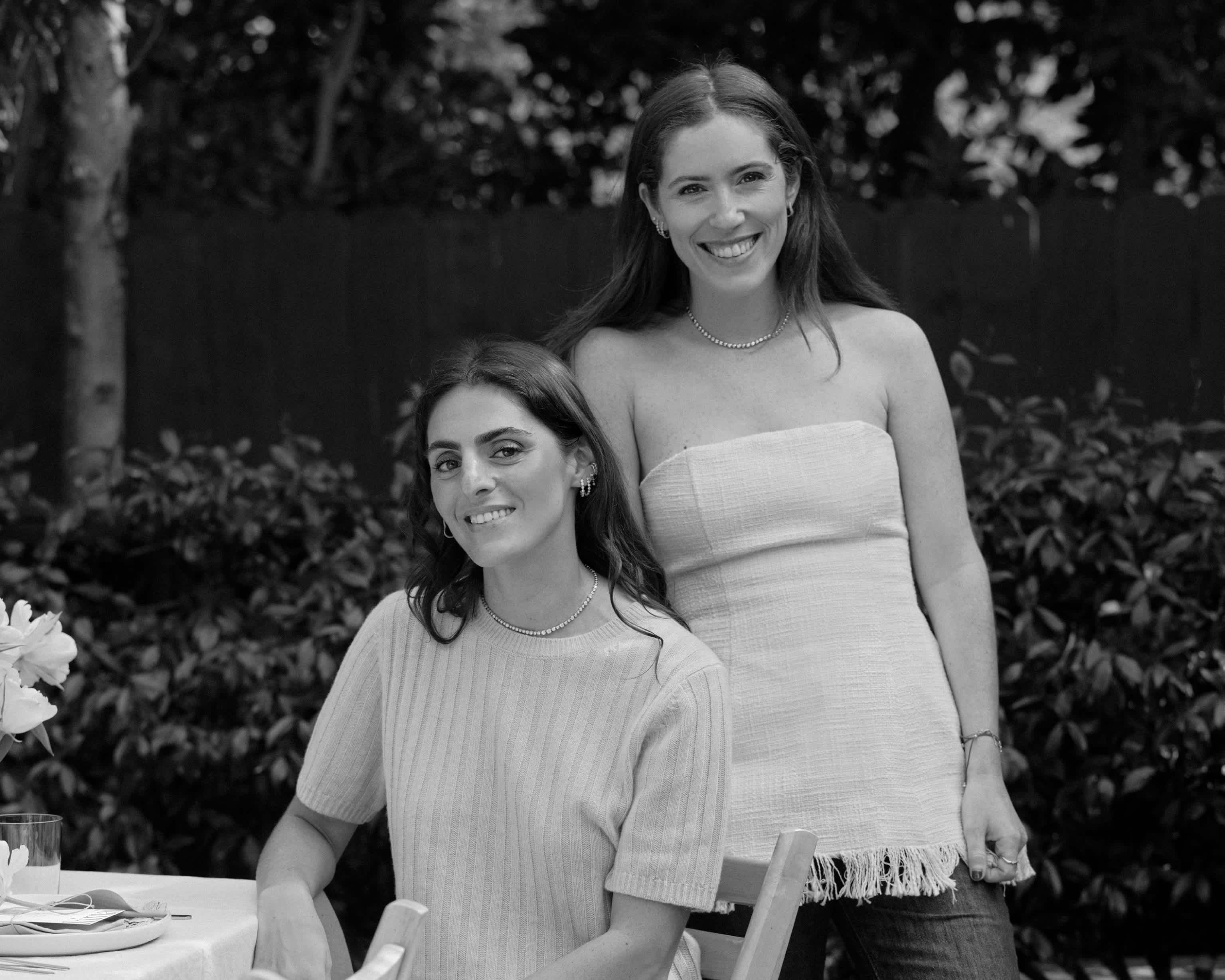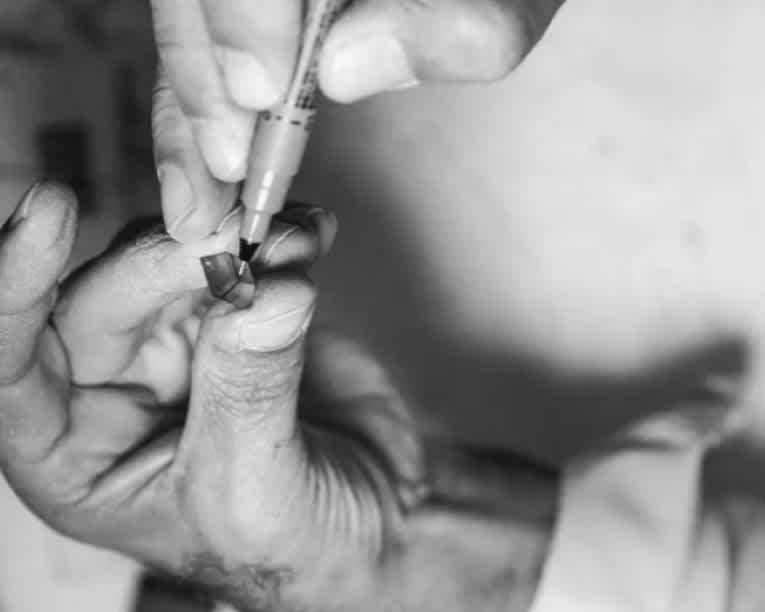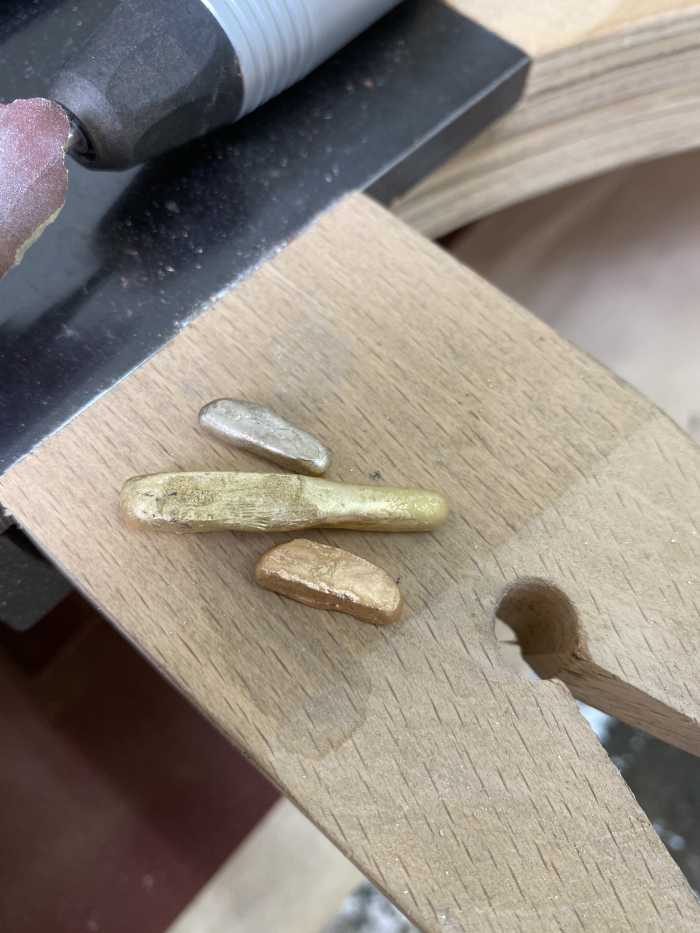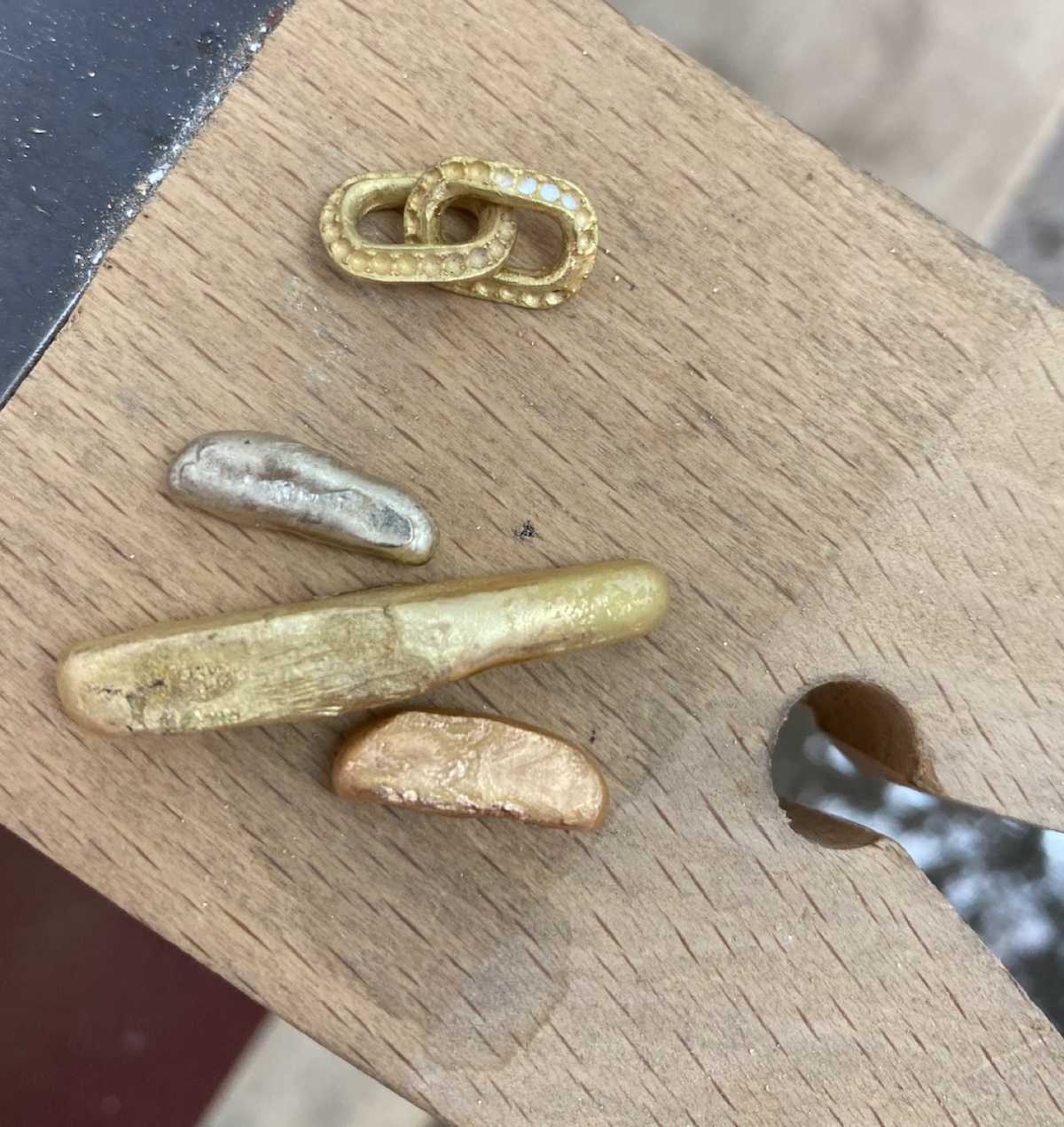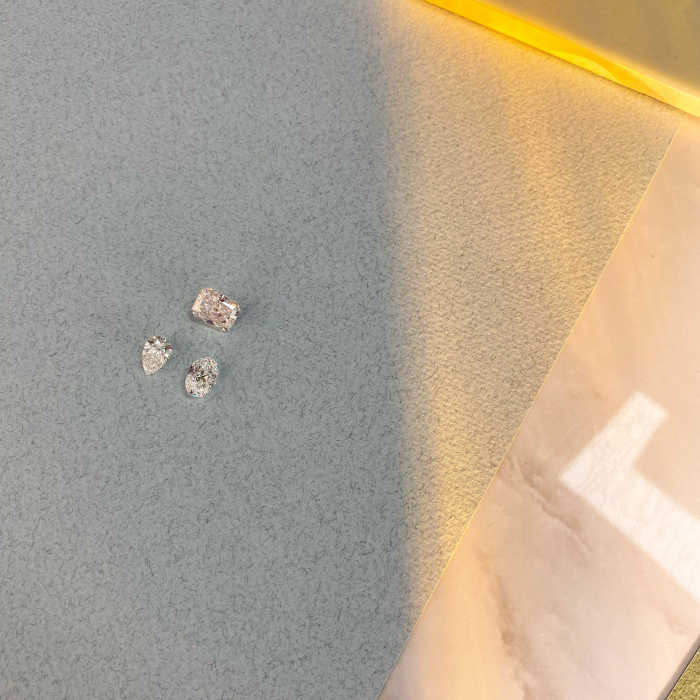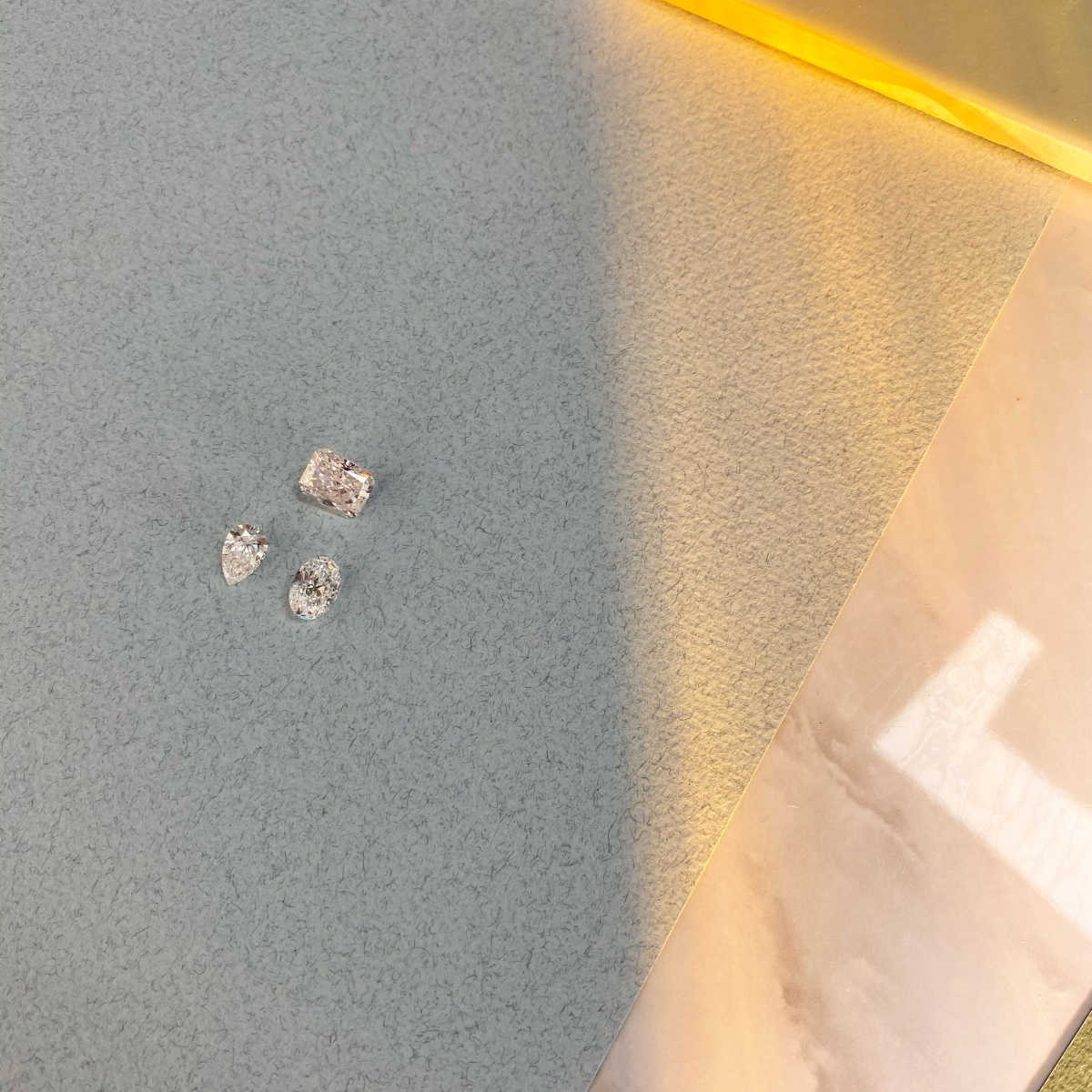Toute notre collection
Tous les bijouxNos BestsellersPièces Personnaliséescarte cadeau digitaleAlliances Bague JackiePar Catégorie
Boucles d’oreillesColliersBraceletsBaguesEar cuffsBracelets pour HommesBagues de FiançaillesAlliancesColour
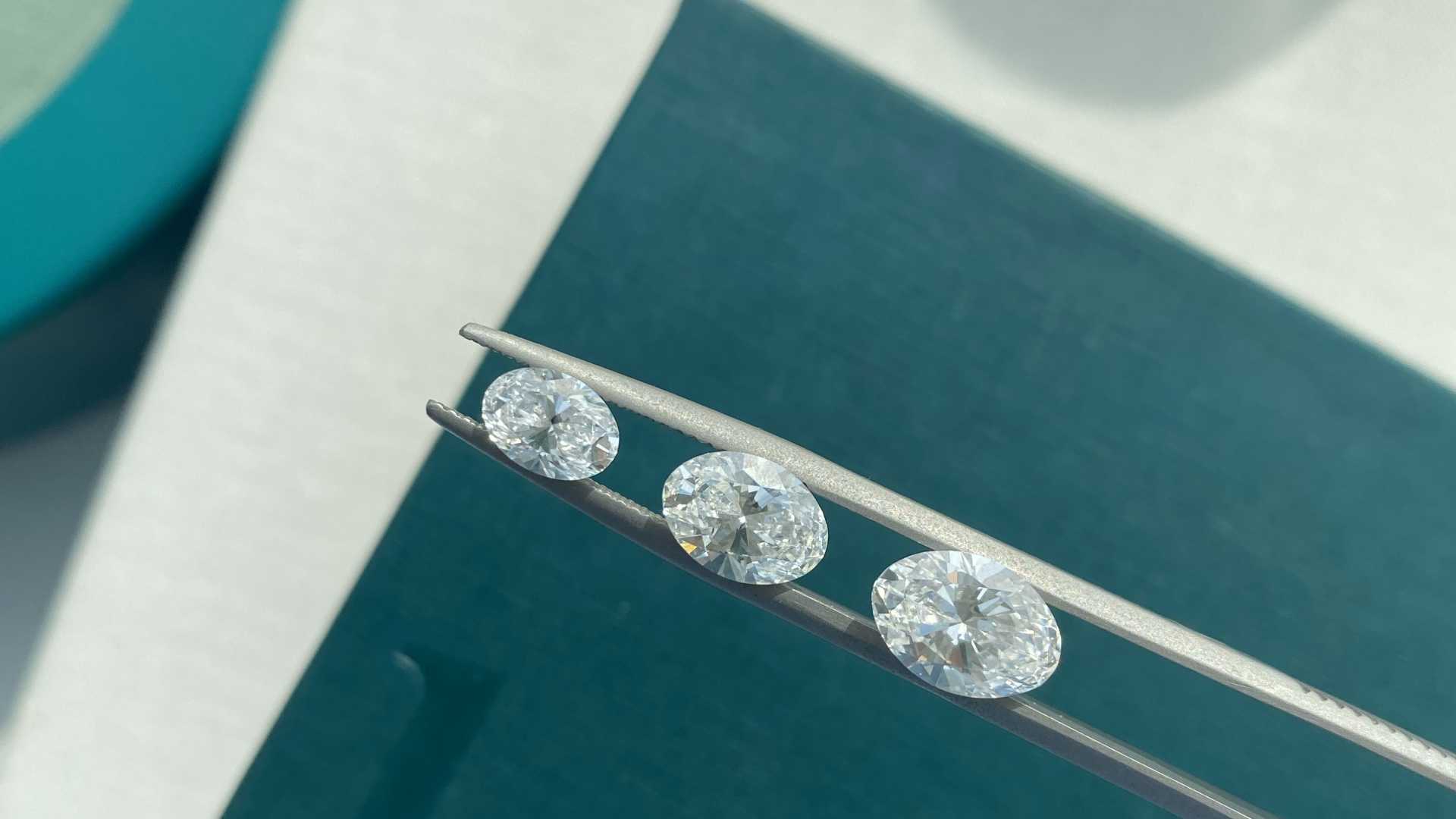
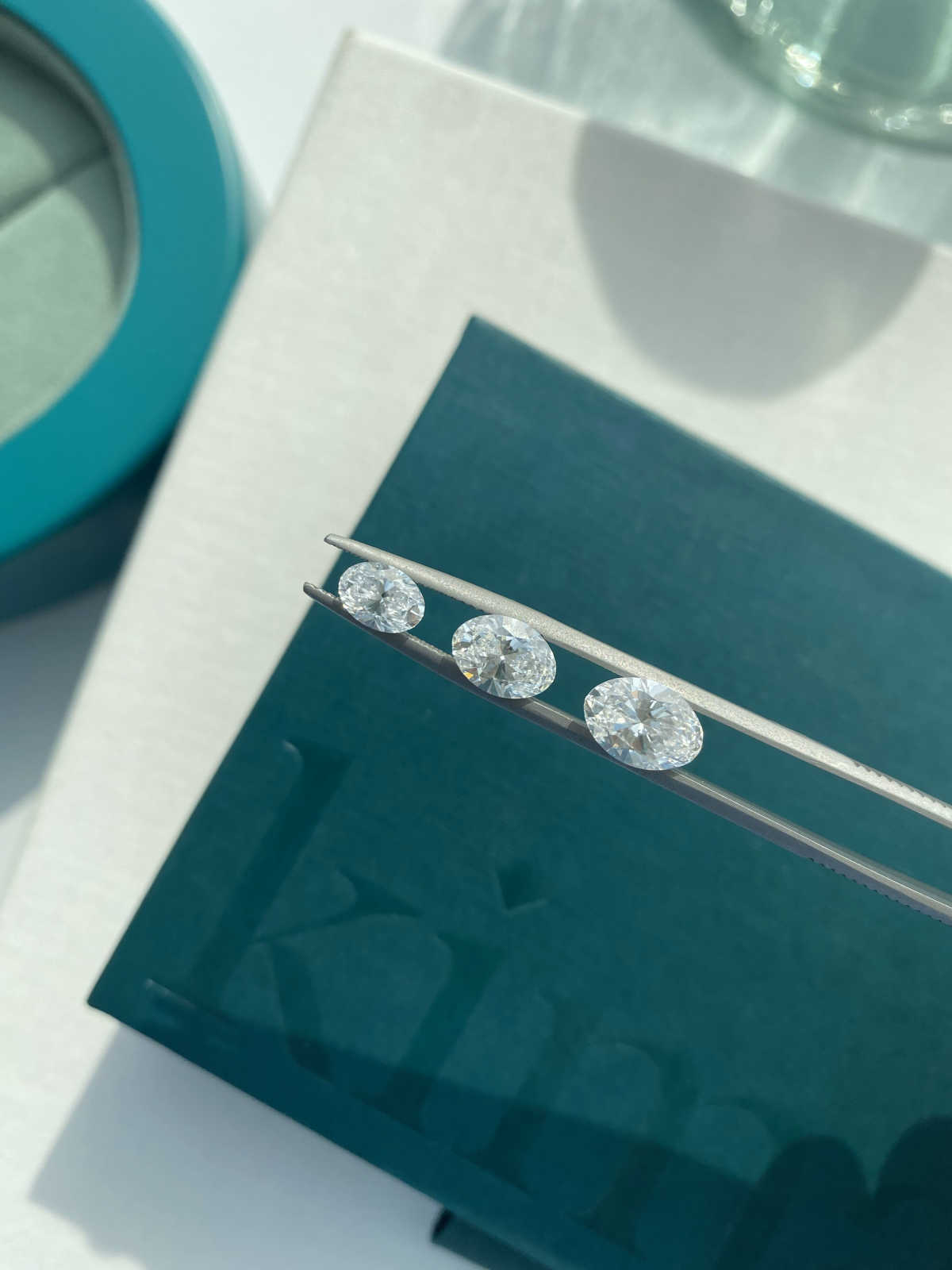
Colour is one of the four factors (4C’s) in grading a diamond, both lab grown and mined. Diamond colour evaluation is actually based on the absence of colour, a chemically pure and structurally perfect diamond has no hue. Many of the colour distinctions are invisible to the untrained eye which is why the Gemmological Institute of America and other labs use the D-to-Z diamond colour-grading system. With this they compare the diamond with established master stones under controlled lighting conditions. These distinctions make a huge difference in diamond quality and price so it’s important to get an expert opinion.
It’s actually incredibly rare to find a diamond that completely lacks colour. Diamonds with a poor colour grade can appear yellow, instead of the desired brilliant white but they can also be found in any naturally occurring colour, including pink, yellow and green. D is the best grading you can get as it lacks all colour.
Lab grown diamonds can share the same colour flaws as mined, as the mining process is replicated in a laboratory the same way. There are actually a wide range of colours that depend on the lab’s level of technology. Some have the knowledge and tech to create colourless grades, others do not. However, the technology is constantly developing, unlike the unpredictable mining process. Lab grown diamonds are graded in exactly the same way as mined diamonds.
HOW IS COLOUR GRADED?
The first official grading (or rating as it is less commonly called) of Diamonds was by the London Diamond Syndicate, in order to sort through rough Diamonds for sale. Up until the 1940s there were many different colour systems used by diamond traders, for example the first three letters of the alphabet, numbers and Roman numerals. These often led to confusion, inconsistencies and inaccuracies.
In order to avoid confusion and create an accurate international system, the Gemmological Institute of America (GIA) introduced a fresh colour scale, which is now the accepted industry standard for grading diamonds.
The diamond colour chart
Devised in 1953 by Richard T. Liddicoat, this scale ranges from D at the highest (colourless and extremely rare) to Z at the lowest (light yellow or brown). Diamond prices decline or increase in alphabetical order, with a G colour grade being cheaper than a D grade.

The diamond colour chart
Devised in 1953 by Richard T. Liddicoat, this scale ranges from D at the highest (colourless and extremely rare) to Z at the lowest (light yellow or brown). Diamond prices decline or increase in alphabetical order, with a G colour grade being cheaper than a D grade.
D-F
Colourless diamonds – the very highest in quality with a colourless, icy look. To the naked eye, all 3 colour grades will appear colourless and look identical. Even a trained diamond grader will find it difficult to distinguish between a D or F colour diamond, outside of lab conditions because none of them have any obvious and unwanted yellow or brown hue. You’d only be able to distinguish the subtle differences with an electric colorimeter. This grading band is highly desirable due to its flawless or near flawless colour and is rare in both the mining and lab process.
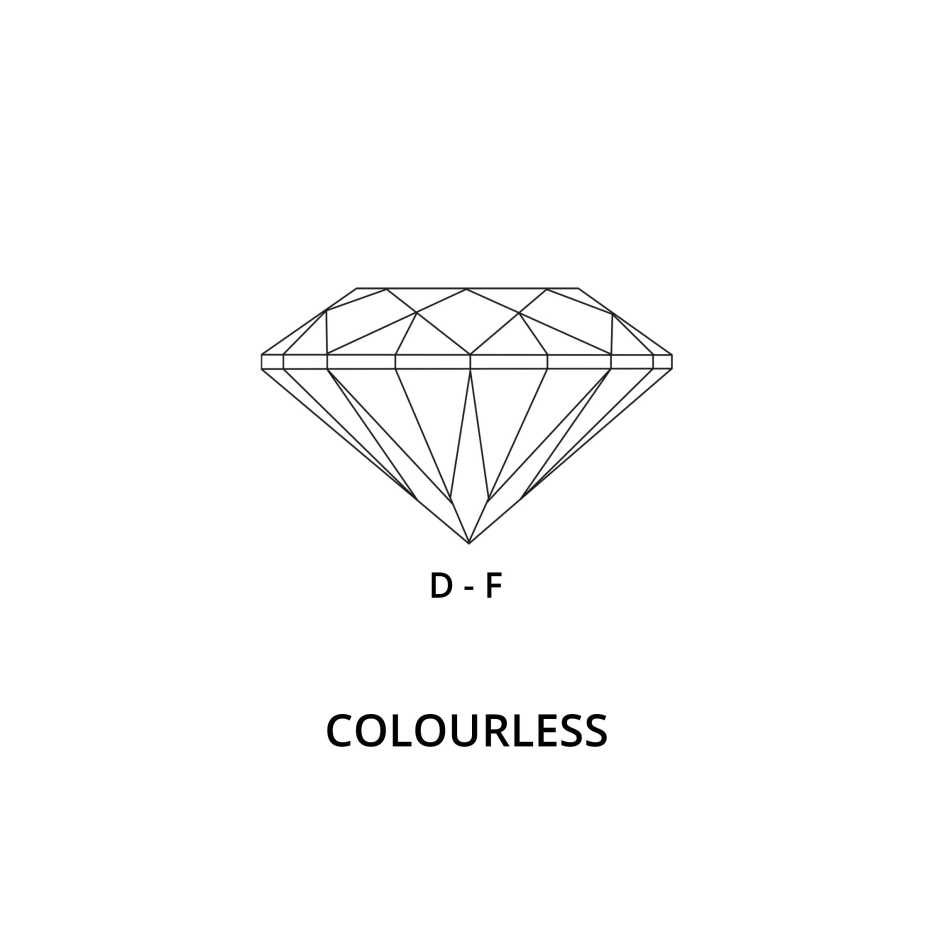
G-H and I-J
Near-colourless – some colour. These diamonds contain traces of warm colour in their body when they are viewed face down. G diamonds are popular because the colour is difficult to see with the naked eye when compared with D-F gradings, whilst H diamonds are the first to have noticeable warmth. I-J diamonds have a slight yellow tone.
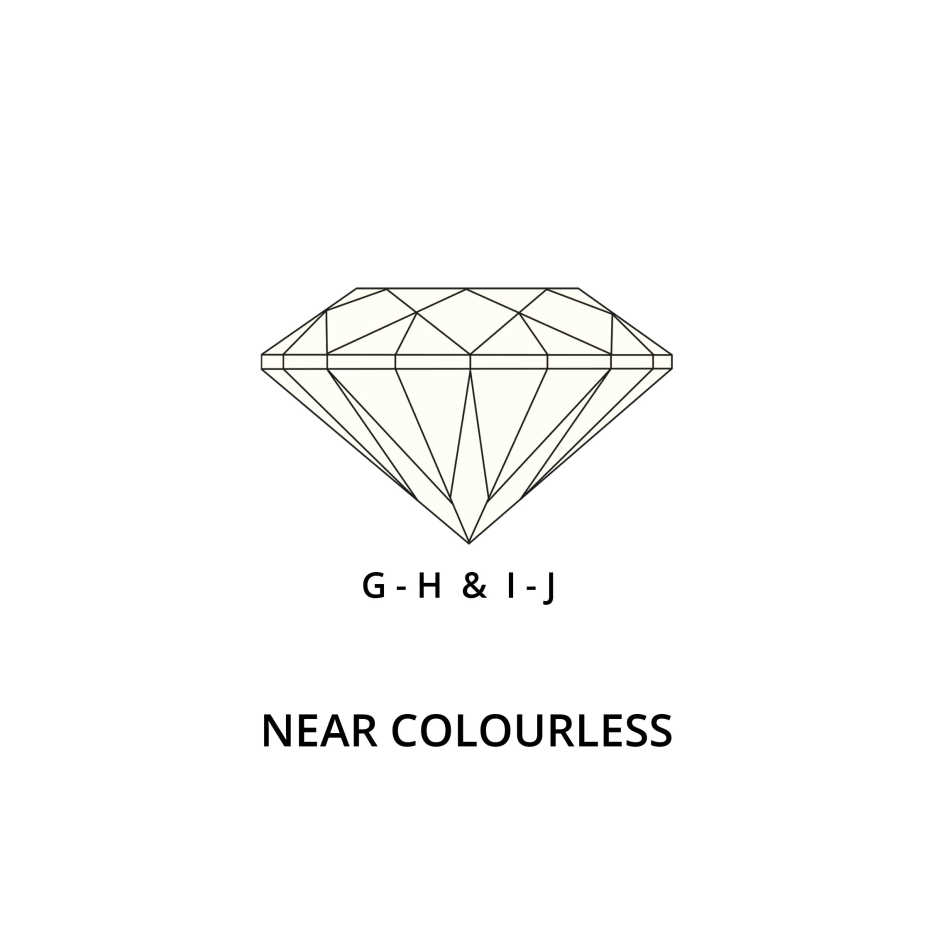
K-M
Faintly noticeable colour. These diamonds show a hint of colour that can be noticed with the naked eye when in the face-up position. There is a subtle yellow hue to these diamonds that make them less expensive.
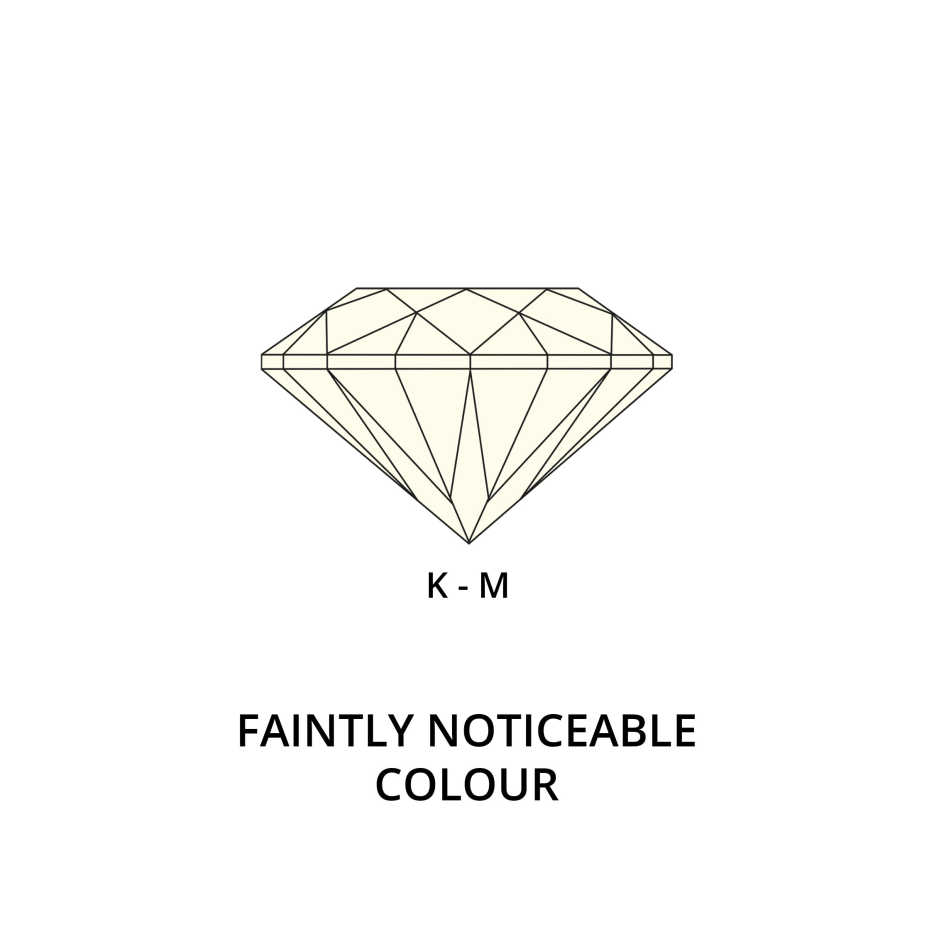
N-Z
Noticeably warm yellow colour – these are very rarely sold in fine jewelry brands.
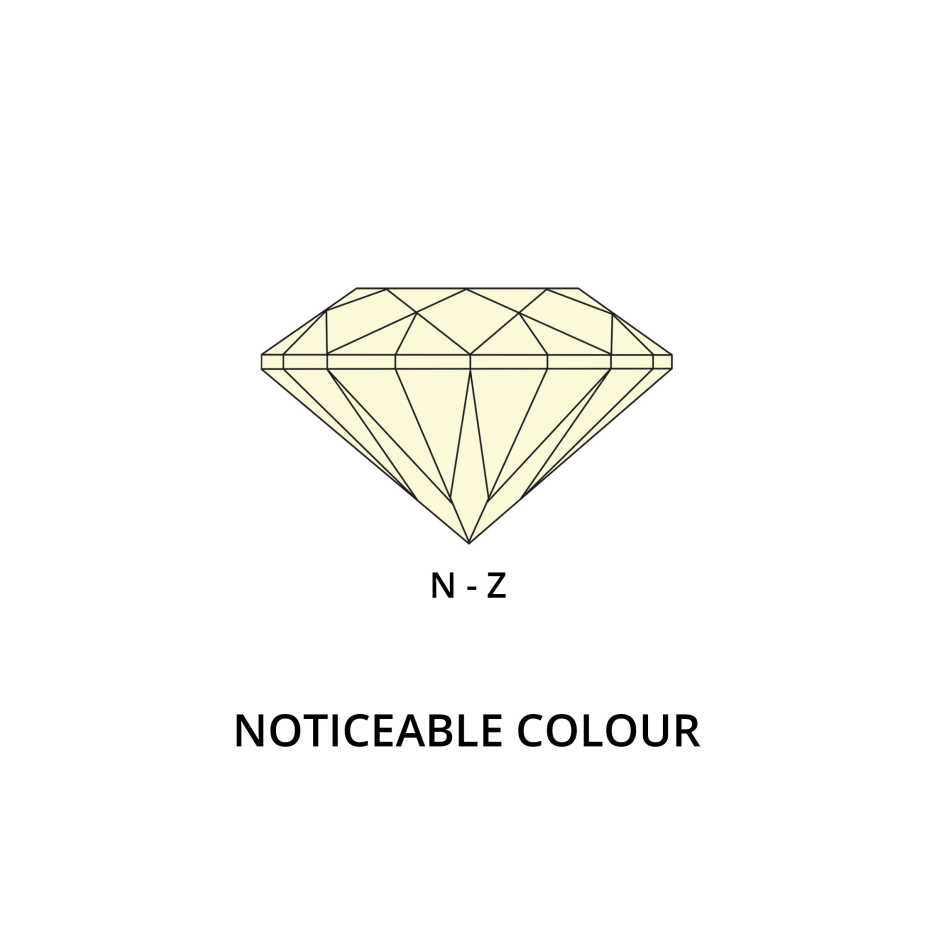

The technique
Diamond colour rating is the only aspect of diamond grading that can be done with the naked eye. This is done using a sterile colourless light box or white folded card, whereby gemologists can compare the stone to others in a master set of diamonds of known qualities. For example, if a stone is to be graded G, it is compared to an F, G and H coloured diamond to find the stone that it most closely resembles. A certificate from the GIA requires a five-person jury who must unanimously agree on the grade.
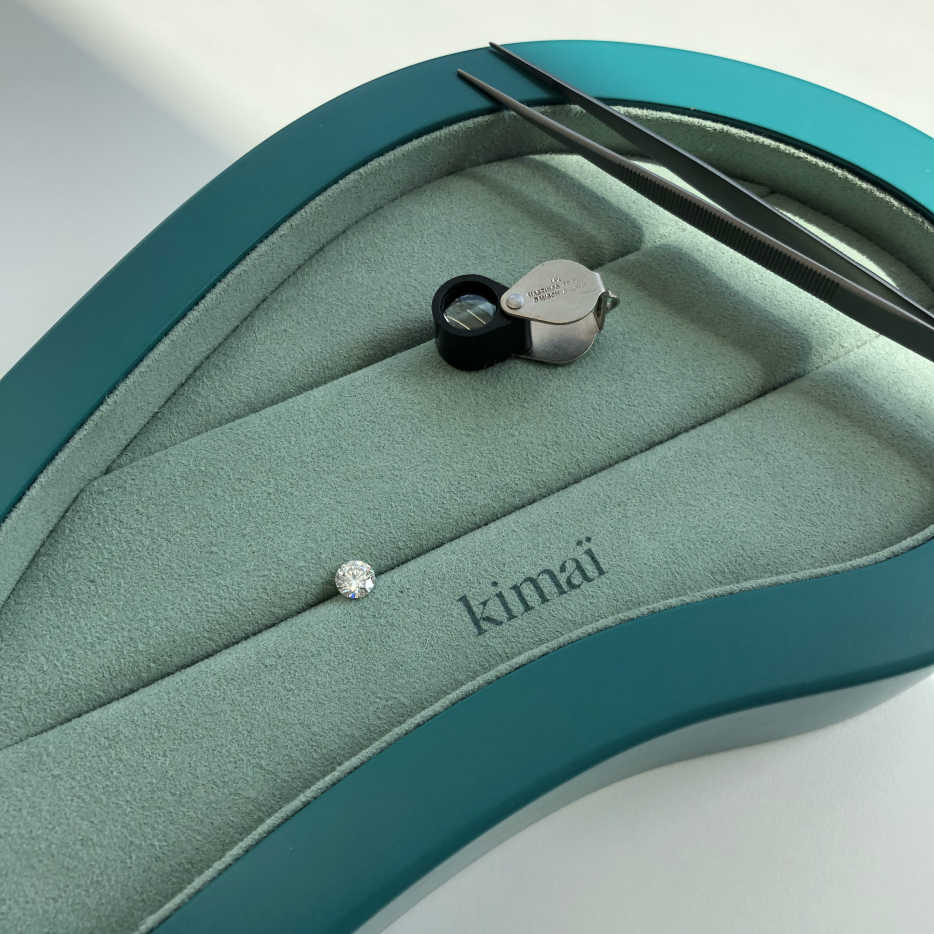
HOW TO BUY A DIAMOND BASED ON COLOUR
The absence of colour in a diamond makes it far more desirable and expensive, of course this also relates to the size and shape of the diamond, as well as the setting preference. Colour is also more visible in bigger diamonds, so it’s strongly suggested that anything over 1ct needs a H or higher colour grade. Certain diamond cuts can actually hide colour better than others.
Choosing your setting
The colour of the precious metal in your setting should be considered carefully. The facets of a diamond behave like many tiny mirrors and when it comes into contact with the colour of your band or prongs, it will be reflected within it.
Yellow gold casts a warm glow and would look best with faintly coloured diamond, whilst platinum or white gold can make a colourless diamond look more piercing. The type of setting you choose can either mask or enhance the colour.
D-F: Typically they are set in platinum or white gold to complement and enhance their unique icy and colourless appearance. A coloured setting would reflect and negate the diamond’s colourless effect but some choose this setting in the hopes of creating a contrast to make the diamond stand out further.
G-M: a yellow or rose gold vintage setting works well due to its warmer tone.
Matching with side stones
Colour grade becomes particularly relevant if you’re purchasing an engagement ring with side diamonds, or a Three Stone Ring. With this, you either need to make sure the diamonds match up with the centre stone or they are slightly darker to accent the higher colour grade.
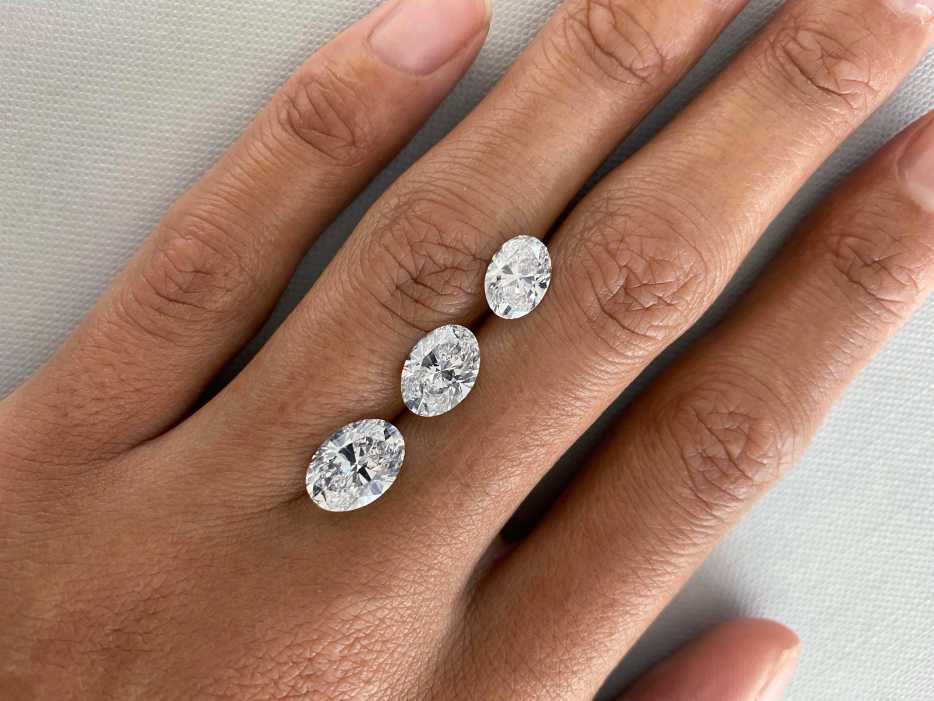
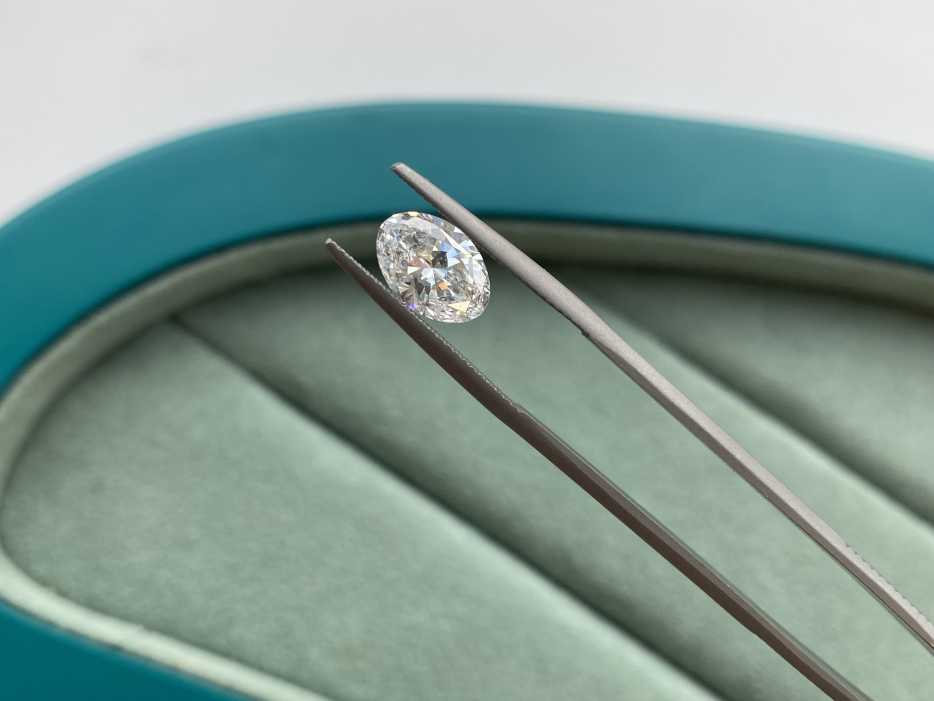
WHAT ARE ‘FANCY’ COLOURED DIAMONDS?
Fancy coloured diamonds go off the typical colour scale as they have distinct and opulent hues that come in every colour of the spectrum, including blue, green, pink, and red. Therefore, the above guide does not apply to these stones.
Coloured diamonds are highly prized and rare (one in every 10,000 mined diamonds (0.0001%) possesses natural colour). Unlike colourless diamonds which are valued for their lack of colour, fancy diamonds are valued for their intensity.
The key point to note is that fancy diamonds are formed through a glitch in the creation process; colourless diamonds will possess only carbon, impurities are what gives it a coloured tinge. Lab grown and mined coloured diamonds are created in exactly the same way, the scientist simply just replicates the process found in nature and so colourless diamonds can be created on purpose in a lab.
An advantage of creating coloured diamonds in a lab is that it’s much easier for scientists to experiment in a controlled setting. Whilst the science behind creating ‘fancy’ lab diamonds is kept protected by the labs, in a ‘natural diamond’, they are created by combining carbon with other chemicals. An educated assumption is that this process is mirrored in the lab. For example;
Yellow, Brown, and Orange Diamonds: nitrogen and carbon
Blue Diamonds: boron and carbon
Green diamonds: gamma radiation
Pink and Red diamonds: higher pressure, distorting the diamond’s lattice
Are diamonds graded Z fancy-coloured?
No. They fall outside of the typical grading system. Whilst the FTC doesn't actually provide any guidelines for the use of the term “fancy-colour”, it is agreed within the industry about what colour range is customary for fancy-colour diamonds. They are usually yellow or brown and have more colour than a Z master stone, or they exhibit another hue.
Catégories pertinentes
Want to learn more about lab grown diamond?
Book an appointment with one of designers and discuss any questions you might have, or what your needs may be.


